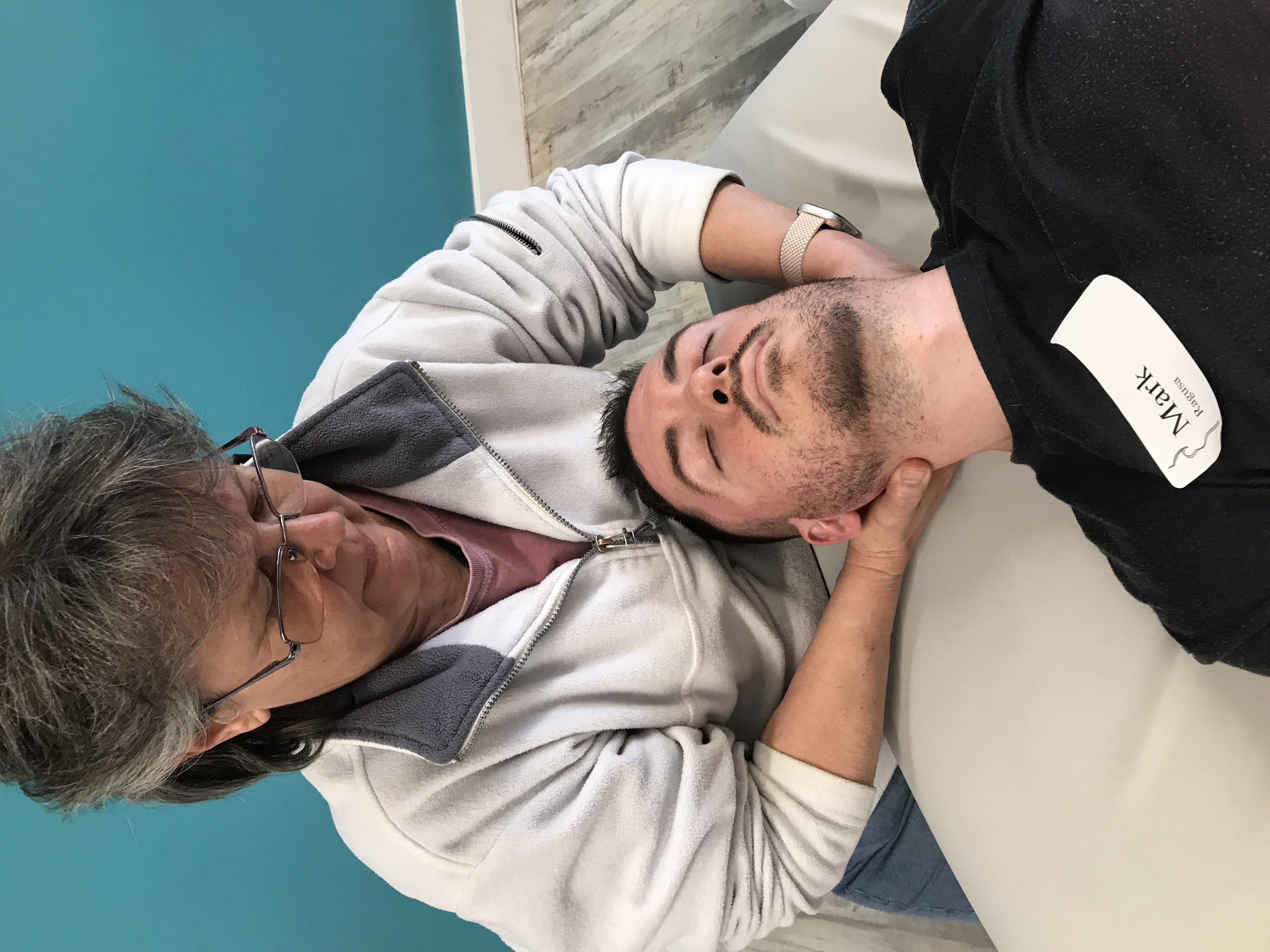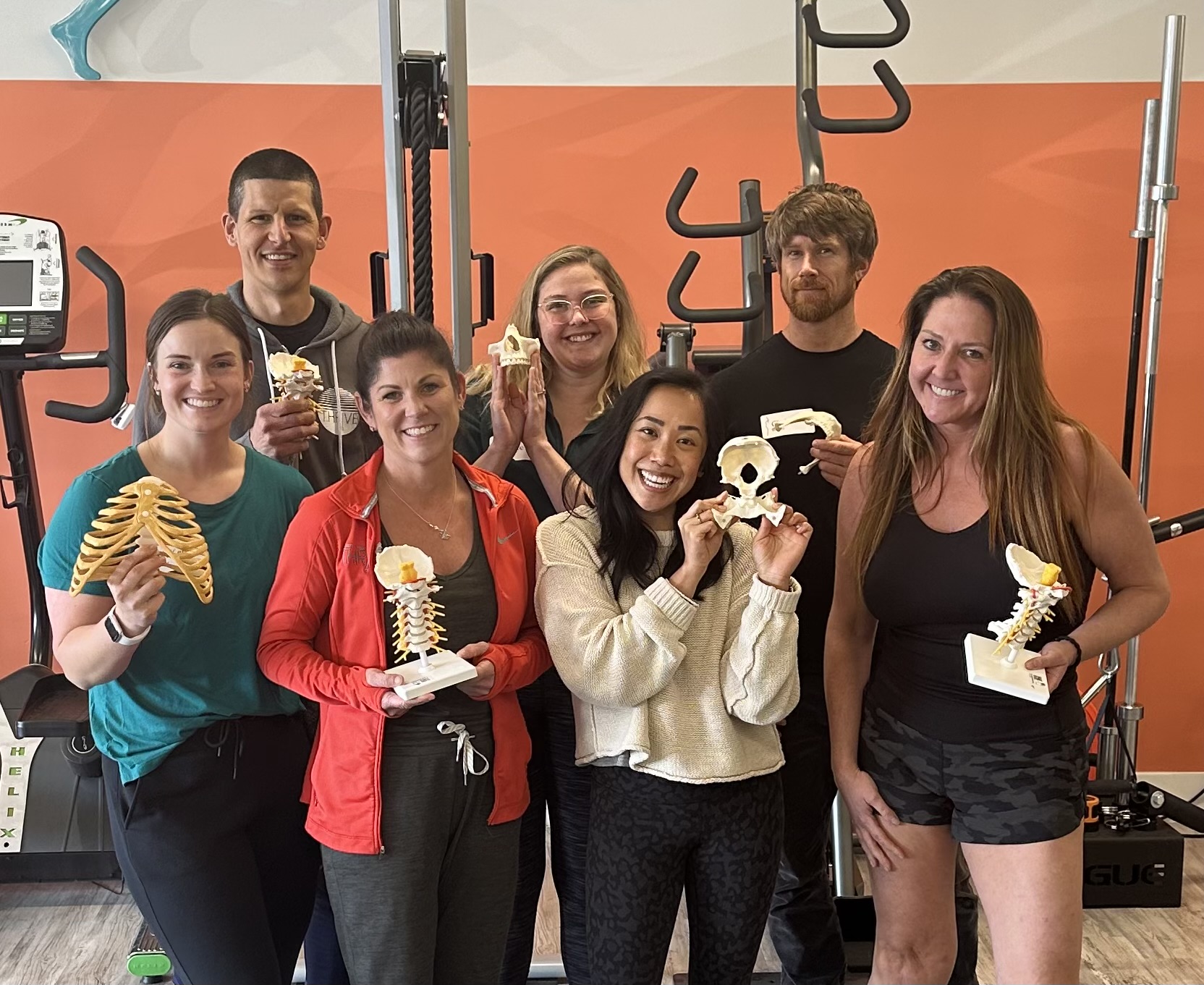An enjoyable weekend was spent with a fantastic, energetic group at Thrive Proactive Health in Virgina Beach. Thrive has hosted numerous PRI courses, and its clinicians were ready to take their PRI knowledge up a notch with Cervical Revolution.

As in every PRI course, the concepts in Cervical Revolution are rooted in our neurological propensity to be oriented in right stance, a dilemma that manifests itself in the neck and cranium. Our right atlas, in particular, remains oriented over the right foot and under a right occiput, creating a highly influential “floor” for the cranium. A cervical pattern is established, resulting in tonicity of a chain of muscles known as the temporal mandibular cervical chain, or TMCC. Much like the left AIC and right BC chains, the right TMCC may become over-referenced during upright function. And just like the sacrum in the pelvis and the sternum in the thorax, our third “S” bone, the sphenoid, may become patterned in its position and movement.
The effects can be profound. Consider the vital openings associated with the neck: the foramen magnum and the pharynx. Malposition and narrowing of these openings effect nervous system and visual and vestibular function, cerebral spinal fluid flow, circulation to, and drainage of, the brain, and airway, swallow, speech, and chewing patterns.
We practiced objective tests, unique to this course, that assess loss of cervical and mandibular motion and the likely presence of two common cranial positions (called “lesions” by osteopaths): left sidebending and right torsion. We presented multiple photos of faces, with facial characteristics that reflect these two positions, and discussed the impact of these positions on symptoms that we commonly treat: neck pain, headaches, dizziness, and TMJ pain and dysfunction.


To prepare for their Monday morning patient/client, participants experienced techniques designed to restore cervical neutrality, a sense of the left OA floor, lateral shifting of the mandible, alternating cranial expansion of the temporal bones, and sphenoid orientation.
Finally, we discussed patient examples in which “orthotics for the mouth” — dental splints – were combined with a PRI program, resulting in beautiful therapeutic outcomes. I hope that those attendees who haven’t yet established a relationship with a dentist are now inspired to make that happen. Mark Ragusa, you have Howard Hindin, DDS, right in your neighborhood.
Laurie Johnson, see you on the next zoom course😊 Mark Pedersen, wishing you all the best as you begin your physical therapy studies. Takumi Sakabe, safe travels back to Japan. You have a wonderful PRI cohort that will take you in with open arms. Thank you to everyone in attendance for your questions and insights and to the clinicians of Thrive for hosting and keeping the discussion light and lively!



